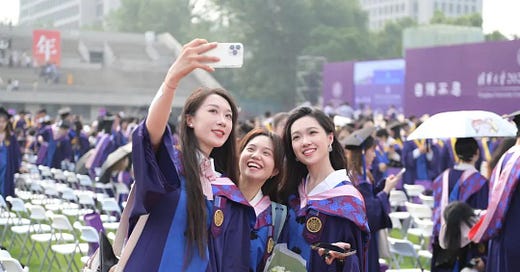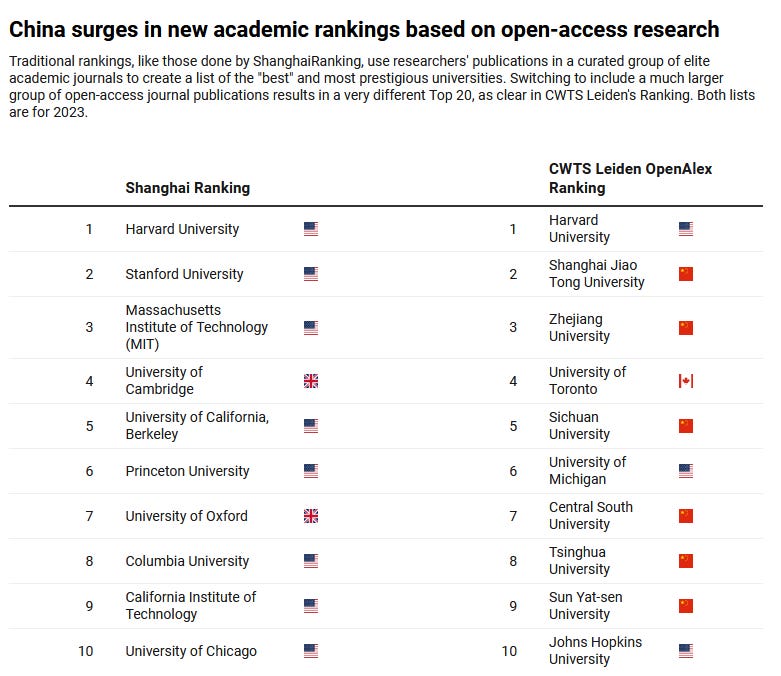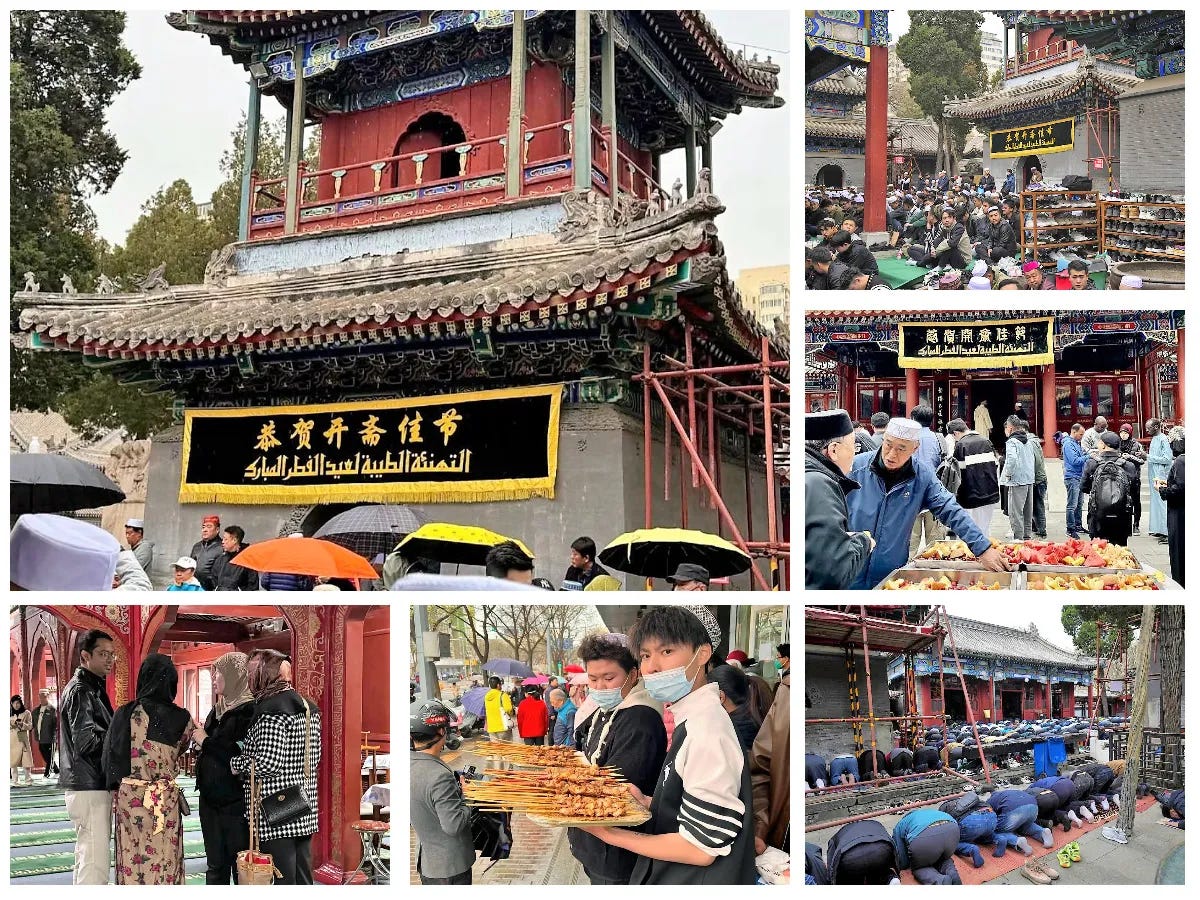Chinese universities overnight in top ranks, brewing coffee, bridging cultures
Selection of China backgrounds | perspectives | context | news
China21 Journal regularly selects a number of publications from (social) media for more background, perspective, context or news about China.
#cross-cultural-communication #culture #learning
To do things in China, you must do people first
In a globalized economy, the ability to negotiate across cultural boundaries has become an essential skill for Western businesses. The Chinese market, in particular, presents a unique set of challenges and opportunities. Western negotiators can benefit from exploring the key differences – and from following a handful of guiding principles for inter-cultural communication.
A distinctive landscape
The starting point is understanding the Chinese approach. It goes beyond what Western executives would see as traditional business dealings, encompassing a rich tapestry of cultural and historical nuances. The case of Ericsson’s foray into the Chinese telecommunications sector in the early 2000s is illustrative. The Swedish multinational’s approach underscored the importance of pre-negotiation phases, involving initial contacts with government authorities to ascertain technological capabilities and reliability.
It is also key to understand that the finish line may move: even when you think the hardest part is done and the deal is signed, there could be a new round of renegotiations. One experienced Swedish negotiator recalls: “Unlike negotiators in other countries who consider agreement final, Chinese negotiators often revisit and renegotiate previously settled issues, showing a tendency not to adhere strictly to initial agreements.”
Research also points to substantial differences in negotiation style. Tong Fang at the Stockholm Business School writes that Chinese negotiators typically exhibit a blend of roles. The ‘Maoist Bureaucrat’ intertwines politics with business, adhering to national agendas. The ‘Confucian Gentleman’ emphasizes trust, mutual benefit and relationship over profit; while the ‘Sun Tzu-like Strategist’ approaches negotiations as a competitive battlefield, employing psychological tactics to gain the upper hand. This mix makes the negotiation process complex and multifaceted.
Above is the introduction of ‘Bridging Cultures’, an essay written last month (March 2024) by Dr Catherine Hua Xiang, Course Director the London School of Economics and Political Science and Author of Bridging the Gap: An Introduction to Intercultural Communication with China.
She outlines six essential strategies and principles for effective negotiations with Chinese counterparts; strategic team formation, importance of political endorsement, valuing relationships over contracts, leveraging local expertise, cultivating patience, and culturally-informed pricing strategies.
Furthermore she emphasizes on following inter-cultural communication strategies necessary for successful negotiations; adaptability to cultural differences, active listening and clarification, build rapport and trust, flexibility in your approach, and utilize translators effectively.
Mutual benefit
She concludes that these negotiations are more than just business transactions; they are cross-cultural engagements that, when navigated effectively, can lead to lasting partnerships and mutual growth. By mastering these principles and strategies, Western firms can unlock the potential of the Chinese market, fostering successful and sustainable business relationships.
Read full essay here
#university #university-ranking #science-publications
Chinese universities grab top spots overnight in science ranking
University leaders pay close attention to comparative rankings such as those offered by Times Higher Education, ShanghaiRanking Consultancy and others. Rankings influence student matriculation numbers, attract talented faculty and justify donations from wealthy donors. University leaders rail against them, and some schools “withdraw” from them, but rankings are influential.
A radical shift in the data underlying rankings is about to upend the rankings world – largely in favor of China’s position.
For instance, in early 2024, the Leiden University Center for Science and Technology Studies CWTS group issued new university rankings that add open-data sources to the traditional curated list of elite journals that has been the standard. The results show a world turned upside down for university rankings.
Where once the list of universities with the highest scientific impact would have been dominated by U.S. and U.K. schools including Cambridge, Stanford, Harvard and MIT, the new top 10 list of universities with high scientific impact includes six universities from China.
What does this transformation mean for understanding scholarly excellence? China’s swift progress in science and technology, propelled by investments in research and university strength, has alarmed the United States and other nations. Concerns are mounting that the U.S. may be losing its competitive advantage to an assertive rival, with potential implications for national security, economic standing and global influence. These new rankings will likely raise even more alarm.
This is an extract of ‘China’s universities just grabbed 6 of the top 10 spots in one worldwide science ranking – without changing a thing’, written by Caroline Wagner, Professor of Public Affairs at The Ohio State University (published in The Conversation on April 2, 2024).
Read more in article about the validity (or bias) of curated and open-access science databases for ranking purposes and the history of China’s research productivity. And while a change in ranking databases does not change the reality of science publications, a change in rankings stoke the fires of those alarmed by the rise of China in world science, technology and innovation circles.
#coffee #chinese-consumers #chinese-market
Tea nation is seriously brewing coffee with Chinese characteristics
From out-of-space coffee blends to a new university programme in Coffee Science and burgeoning cafe scenes across the country, coffee has evolved from an exotic import to an integral part of China's food and beverage culture. With a penchant for ambience and novelty, coffee aficionados in China are reshaping the nation's coffee scene.
What initially began as a trendy pursuit for urban youths has now evolved into a daily ritual for many, accentuated by the presence of baristas from all walks of life. Even in the counties, franchises and local cafes are rapidly popping up. Notably, Yunnan Agricultural University announced that they would be launching the country's first, and possibly the world's first, degree programme in Coffee Science and Engineering starting September 2024. Automated machines and robotic baristas are also joining the brew crew, further modernising the coffee experience. However, perhaps the most intriguing trend is the continuous innovation of quirky concoctions, ranging from pork-flavoured latte, chilli-infused java, herbal coffees to a Moutai-infused brew or coffee served in a green pepper.
A World Coffee Portal report last year showed that China, with 49,691 coffee outlets, has the highest number of branded coffee shops worldwide. Eighty-nine percent of consumers surveyed in the report visit or order from a coffee shop at least once a week, with a fifth doing so daily. Shanghai, with over 8,500 coffee shops, also holds the title for the city with the most coffee shops in the world, according to the 2023 China Urban Coffee Development Report.
Source : China’s brewing coffee culture by ThinkChina (April 12, 2024) and watch their short introduction movie on China’s coffee market here.
Following market report on China’s coffee market was also published this month by Baiguan News: What investors should know about the latest on China's coffee & tea market
A detailed data report about China’s largest coffee chain Luckin Coffee (nearly 18,000 outlets in February) in relation to Starbucks and the emergence of other domestic chains, such as Cotti Coffee and 幸运咖啡 ("Lucky Coffee"). The report also outlines data about home and office deliveries versus in-store consumption, product innovation, and trends in first tier cities versus upcoming lower tier urban areas.
Source Baiguan News
And last week…
Muslims in Beijing (and all over China) celebrated Eid Al-Fitr
Muslims in Beijing celebrating Eid Al-Fitr, the end of the Ramadan at the Niujie Mosque (April 10).
Beijing is home to about 250,000 Muslims with 70 mosques of which the Niujie (Oxen street) mosque in Xicheng District is the oldest and largest one.
The mosque was first built in 996 during the Liao dynasty (916–1125). The local Muslim community constructed the mosque using traditional Chinese architecture, with the exception that it displays Arabic calligraphy in the interior.
After it was destroyed by armies of Genghis Khan in 1215, the mosque was rebuilt in 1443 in the Ming dynasty. The mosque was expanded in 1696 in the Qing dynasty.
During the Qing dynasty, the neighbouring markets were known for Halal beef and mutton. And until today, you will find Muslim food stores along the road. The official name of the Mosque is Lǐbàisì, given by the Chenghua Emperor in 1474, but since it is located in Oxen Street (Niújiē), the mosque is generally known as Niujie.
Image 1 : Unsplash Toby Yang, Chongqing
Image 2 : Tsinghua University commencement ceremony graduate class 2023
Image 3 : The Conversation
Image 4, 5, 6 : Baiguan News
Image 7 : China Daily, Xinhua
For more insight and depth on China, browse China21 Journal essays and articles











